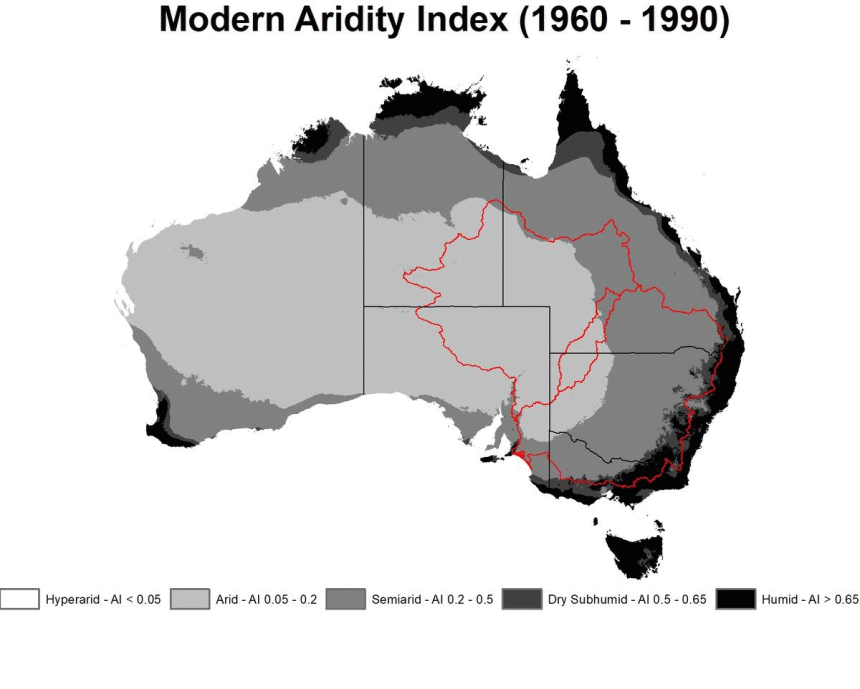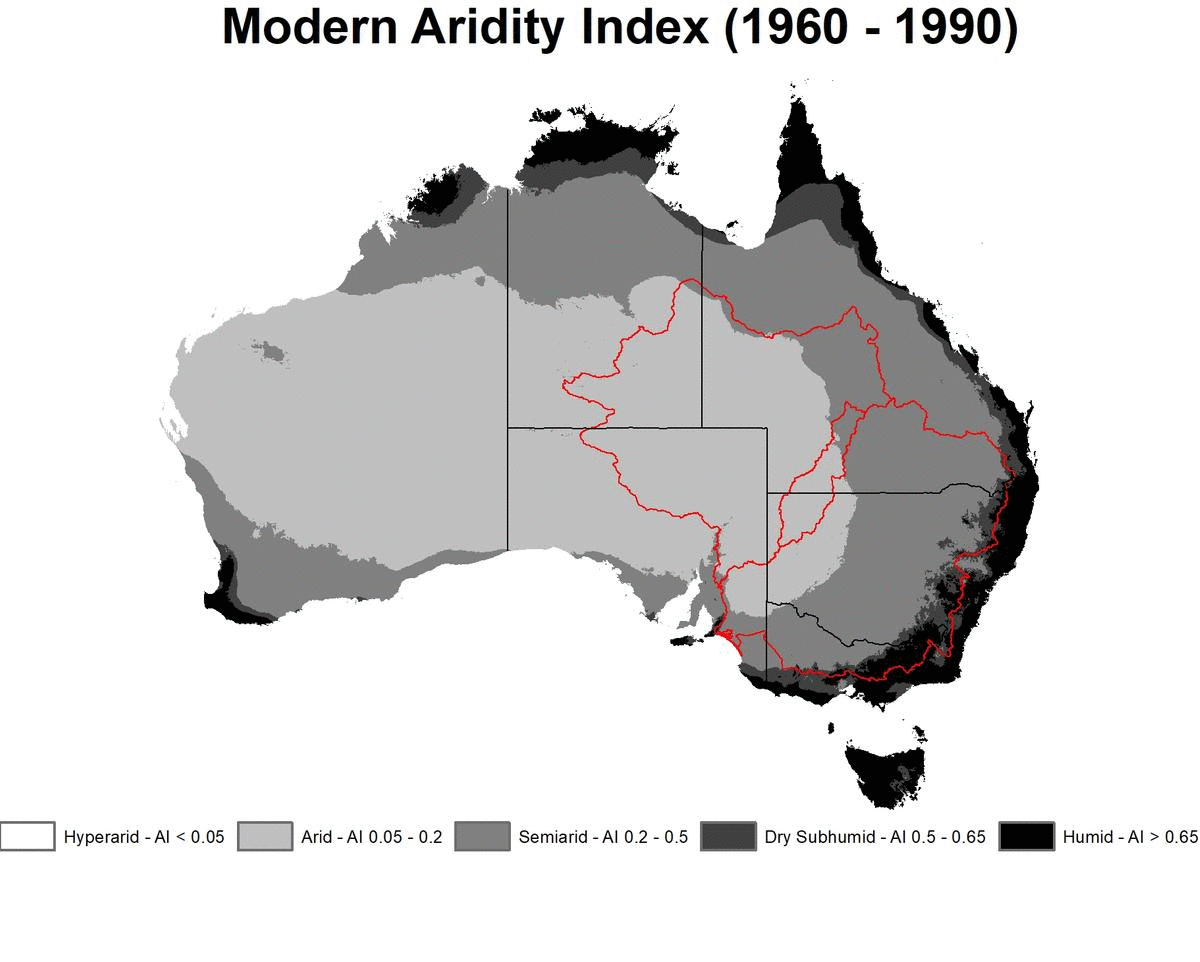Future aridification and the response of Australia’s dryland rivers

Australia’s complex and extensive inland rivers are among the most hydrologically variable in the world, and yet they are lifelines through dry landscapes that support a large and important agricultural industry and some of our most unique ecosystems. Future climate change is expected to reduce streamflow in many of these rivers, and there have been a number of studies that attempt to quantify these reductions in water availability. However, the impact of future climate changes on the structure and function (geomorphology) of rivers has not been explored in any systematic fashion. Rivers are not static conduits of water and sediment but adjust their form and behaviour in response to a range of factors (e.g. slope, valley confinement, climate). Therefore, changes to these factors – in this case climate – can result in dramatic changes in to a rivers geomorphology. In our recently published research, we aimed to, firstly, characterise the projected change in aridity across Australia over the next 50 years, and secondly, to define the geomorphological response of Australian dryland rivers to this change.

Modern aridity index and the projected aridification of Australia by 2070. The red outlines show the extent of the Murray-Darling and Lake Eyre basins. Source: Larkin et al., (2020).
Australia’s dryland rivers are particularly diverse in terms of their geomorphology and hydrology. In this study we identified five different river types, ranging from large, meandering rivers that maintain their size and discharge downstream in a continuous channel, rivers that decline dramatically in size and discharge downstream and are characterised by discontinuous channels and channel breakdown, to rivers that decline dramatically in size downstream and terminate in floodouts. A detailed statistical analysis of a range of geomorphological and hydrological variables showed that the variable that best differentiates these river types is mean catchment aridity. Therefore, if future aridity modelling indicates that a particular river will cross an aridity threshold between river types, we can project the geomorphological changes likely to be associated with that change in catchment aridity.
The projected increase in aridity across the Australian continent is stark. The central Australian arid zone is projected to expand considerably, well into the Murray-Darling Basin, while the relatively humid fringes around the Great Dividing Range (GDR) are expected to contract and become drier. Many of Australia’s dryland rivers rely on runoff from relatively small headwater catchments on the western slopes of the GDR, making them vulnerable to this drying. Of the 29 rivers analysed, 80% are expected to cross a threshold defined by aridity and are projected to undergo geomorphological change. In the most dramatic cases, some presently continuous rivers, such as the Murrumbidgee and Macintyre, are expected to become characterised by discontinuity and channel breakdown. Meanwhile, rivers such as the Macquarie and Lachlan may persist for much of the time as disconnected waterholes, with their important associated wetlands (Macquarie Marshes and Great Cumbung Swamp) being inundated far less frequently. Changes to the structure and function of some of Australia’s inland rivers of this magnitude would have significant and ongoing impacts on ecosystems, river communities, and dryland and irrigated agriculture. More research is urgently needed to fully explore how our most critical inland systems will respond to the rapid climatic changes anticipated throughout the coming decades.
Paper: Larkin, Z.T., Ralph, T.J., Tooth, S. et al. Identifying threshold responses of Australian dryland rivers to future hydroclimatic change. Sci Rep 10, 6653 (2020). https://doi.org/10.1038/s41598-020-63622-3
